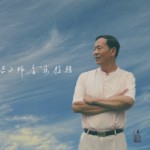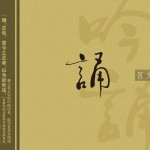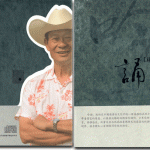Qigong and Wugong
by Ou, Wen Wei
The source of Qigong & Wugong
The nature and quality of Qigong & Wugong
The different functions between Qigong & Wugong
The development of Qigong & Wugong
The reason that Qigong can cure diseases while Wugong can not
Qigong and Wugong (Chinese Martial Art, also called GongFu) are two of many treasures of the traditional Chinese culture. They came from the same source, but with time passing, they gradually are diversed according to their internal and external qualities.
By coming from the same source, we mean that Qigong and Wugong were initially created for the purpose of people building up physical strength in order to survive in the natural environment. At that time, people needed to be strong enough for cultivation and hunting, thus, Qigong and Wugong were developed primarily for survival in the wilderness and nourishment of one’s health.
To nurse one’s health was to regulate one’s physiological functions (which is the balance of yin and yang, the two opposing principles in nature in Chinese philosophy and medicine. The former is feminine and negative, the latter is masculine and positive.) to adapt oneself to the natural balance of yin and yang. For instance, one would work in the daytime, but at night one would need to rest in order to stay healthy and prolong one’s life. In order to survive in the wilderness, one would require some type of skills to protect oneself from external invasions (such as attacks by animals or raid of other tribes).
Speaking of their nature and quality, both Qigong and Wugong aimed at building up people’s health for their well-being. People were able to enhance their health by drawing in the vital energy and the essence of the sun and the moon when they practiced Qigong.
They were also able to absorb the healthy power and energy of the universe to continually maintain their internal physiological functions of their body. (Especially the immunity system which serves the vital role of defending the body against infections and diseases.) Therefore, recuperation from illness and maintenance of a healthy body were achievable. By practicing Wugong on the other hand, was to practice one’s physical skills – to exercise one’s skeletal muscles and to build up one’s strength so as for combatant reasons.
As far as their function was concerned, nourishment of one’s health was of something internal while combat was of something external, therefore, people in the ancient times called the former Neigong(internal form) and the latter Waigong(external form). Neigong was beneficial to internal organs while Waigong was beneficial to muscles and bones. When they were first created, Neigong and Waigong were closely coupled and benefiting each other when practiced. However, as time passed, with development and introduction of more advanced tools to the society people no longer needed to hunt nor guard against outside invasions, thus, the exercises were divided into two different types each according to their features and functions, with one developed into Qigong and the other into Wugong.
Qigong formally appeared in the Warring States (475-221 BC) and eventually evolved into three different main branches – YU, XI, and TAO. It is now estimated that there are approximately one thousand branches, but they all aim for the same goal in spite of changes over time – to enhance people’s internal physiological functions so as to prolong their lives and help tune their emotion and mood so that the body and soul could reach a state of calmness and peacefulness. Among the many kinds, dynamic exercise and static exercise are the two main important kinds. Dynamic exercise involves set movements, but the significance of the movements is quite different from that of Wugong and that of other sports. The goal of dynamic exercise is to strengthen the muscles, bones, and joints to better benefit our internal physiological functions. Static exercise on the other hand, aims at soothing people’s mind and enhancing the functionality of the entire integrated nervous system. This, helps to regulate a person’s emotion and mood to be in a calmer and serene state. Static exercises relate a lot to the consciousness or super consciousness to further regulate the body and nurse our health.
Wugong was initially practiced for the purpose of combating. Safeguard was it’s apparent intent and thus continued to develop in that direction. In the primitive society, Wugong was mainly for men to capture wild beasts, hence, many styles were developed based on the combatant movements of wild animals. As time went by, tribal war had became very fierce and the main purpose of practicing Wugong skills was to defend against invaders. Wugong and Qigong then gradually became diverse with different purposes. During the Qin and Han Dynasty there came Jiaodi and sword skills. During the Nan Bei dynasty xiangpo and jiaoli became popular; In the Tan dynasty Wuju became popular in the army during war time; In the Song dynasty Wugong developed gradually into sets of movements; In the Yuan, Ming, and Qing dynasties there were numerous Wugong schools. Presently, Wugong and Qigong seem to be unrelated, yet, there is in fact no complete separation since they originated from the same source. Up until now, when Wugong is discussed we often hear phrases such as “internal and external readjustment” and “the art of directing one’s energy inside his body to give himself medical care.” The terms “internal” and “energy” are both used in Qigong and Wugong in spite of differences of the two kinds.
“Inside” or “internal” has two aspects in meaning. One is referring to the physical strength, which is the life force or the physiological power of the various organs and the immunity power. The other is referring to the morality, which is the ideological value which is indispensable in Qigong exercises. “Energy” is actually equal to the term “atmosphere” in Qigong or man’s vitality or vigor in modern language.
Our forefathers had remarked: Our forefathers lived longer than we do today and vigor is supposed to be the reason. Of course vigor is the life force. We found this saying in column 18 of the Er Cheng Yishu. It said “Vigor is the commander of blood.” in the Ren Zai Zhi Zi Fang Lun. Blood is the mother (or source) of vitality. Blood circulates with vigor and directs one’s strength to different parts of our body. We find the description “Blood and vigor are twins” in the Nan Jing San Shi Er Nan. This analogy about “blood” and “vigor” is very much the same as the description, “substance is the carrier of power” from the modern science point of view. Vigor, the commander in chief of blood, is also referring to the physiological functions of blood, the circulation system, or is also called the blood supple strength. It’s main role is to supply blood to our heart and keep blood circulations going. Blood is the carrier of the invisible “vitality”, thus, they depend on each other.
If we realized and understood that there are internal and external energies in our body, we could unravel the mystery of why and how Qigong can cure people from illnesses and then became healthy and strong again. We could also see why ordinary Wugong can only strengthen our muscles and joints but might not be able to cure illnesses, especially internal organ diseases. The internal strength is the energy supplied to each of our physiological functions (especially the immunity system) for various organs to function properly and to balance the substantial structures in our body to undergo metabolism. Outer strength is referring to the physical strength (such as strength in our hands and legs) our body utilizes to take part in social activities. Therefore, most patients choose to practice Qigong, but other people who are interested in Wugong also practice Qigong and Wugong at the same time so as to build up both their internal and external energy.
I hold that: those who practice Qigong and Wugong will most likely receive twice the result with half the effort.
Note:
This essay is published in the first issue of “Wulin” in 1999.




 Mr. Xue
Mr. Xue




 Paul Fraser
Paul Fraser